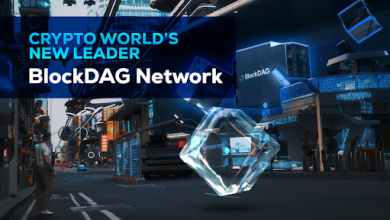Traditional Finance vs. Polkadot: The Smart Contracts Dimension

In the realm of conventional finance, established structures govern the flow of capital, relying on centralized entities to orchestrate transactions, investments, and wealth management. These entities include banks, financial institutions, and regulatory bodies. Polkadot, a decentralized network challenging the status quo, emerges as a transformative force, emphasizing collaboration and connectivity. Operating at its core as a decentralized web, Polkadot envisions a more inclusive and adaptable financial ecosystem. Central to our exploration is the concept of smart contracts—self-executing agreements embedded with code that automate and enforce terms. Understanding the implications of smart contracts is paramount for grasping the transformative potential inherent in this technological paradigm. For in depth knowledge about investing, go to bitqt.biz and connect with an education expert right away!
Understanding Traditional Finance
Foundation of Traditional Finance
Traditional financial systems pivot on fundamental principles. Centralization, where control rests in designated authorities, facilitates the management of funds, investments, and regulatory oversight. This structure, while entrenched, is not without its limitations.
Key Players and Their Roles
In the traditional financial landscape, distinct roles are played by entities such as banks, regulators, and financial intermediaries. These entities ensure the orderly conduct of financial activities, providing stability but often at the cost of flexibility.
Limitations and Challenges
Despite its long-standing dominance, traditional finance faces inherent challenges. Issues of scalability, transparency, and accessibility pose hurdles in meeting the diverse needs of a rapidly evolving global financial landscape.
Decentralized Finance (DeFi) and Polkadot
The DeFi Revolution
Decentralized Finance, or DeFi, signifies a departure from centralized control. It champions transparency, accessibility, and inclusivity, seeking to redefine the financial landscape. Polkadot emerges as a facilitator, a catalyst in this seismic shift.
Polkadot’s Enabling Role
Polkadot’s architecture, with its interconnected relay chains and specialized parachains, forms a conducive environment for DeFi applications. These components work synergistically to create a decentralized and interoperable ecosystem.
- Navigating the Future: Polkadot and Decentralized Finance
- Polkadot (DOT) & Avalanche (AVAX) Investors Flock to Pushd’s E-Commerce Vision, Eyeing Unprecedented Growth
Advantages of Decentralized Finance
The advantages of DeFi over traditional finance are manifold. From enhanced security and reduced reliance on intermediaries to increased financial inclusivity, the decentralized approach holds the promise of a more resilient and responsive financial framework.
The Rise of Smart Contracts
Demystifying Smart Contracts
At the heart of this evolution are smart contracts. Functioning as self-executing code, these contracts automate processes, ensuring efficiency and accuracy in transactions. The implications of this technological leap extend far beyond mere convenience.
Efficiency and Security
Smart contracts offer unparalleled efficiency by automating tasks that traditionally required manual intervention. Additionally, the inherent cryptographic nature of these contracts enhances security, mitigating the risks associated with traditional contractual agreements.
Real-world Applications
Examining successful applications of smart contracts in finance unveils their transformative power. From automated loan agreements to decentralized exchanges, these applications reshape the financial landscape by streamlining processes and minimizing the need for intermediaries.
Polkadot’s Approach to Smart Contracts
An Interconnected Framework
Polkadot’s architecture, with its relay chains and parachains, forms the backbone for implementing smart contracts. This interconnected framework addresses scalability concerns, ensuring seamless integration and operation of smart contracts across the Polkadot network.
The Role of Parachains
Parachains, specialized blockchains connected to the Polkadot relay chain, play a pivotal role in supporting smart contracts. Their versatility and focused functionalities contribute to the adaptability and efficiency of the overall system.
Addressing Scalability and Security
One of Polkadot’s key strengths lies in its ability to address scalability and security concerns associated with smart contracts. By providing a robust and scalable infrastructure, Polkadot positions itself as a viable system for the widespread adoption of decentralized applications.
Challenges and Considerations
Integration Challenges
The integration of smart contracts into traditional finance is not without its complexities. Bridging the gap between centralized and decentralized systems poses challenges that necessitate careful consideration and strategic planning.
Regulatory Landscape
Navigating regulatory landscapes presents a unique set of challenges. Ensuring compliance with diverse regulatory frameworks while embracing the decentralized nature of smart contracts requires a delicate balance and ongoing dialogue between stakeholders.
Security Concerns
As with any technological advancement, security remains a paramount concern. Polkadot and smart contracts must continuously evolve to address potential vulnerabilities, ensuring the integrity and trustworthiness of the financial interactions they facilitate.
Future Implications and Opportunities
Shaping the Future of Finance
The integration of smart contracts into the financial ecosystem signifies a paradigm shift. As the technology matures, it has the potential to redefine how financial transactions, agreements, and collaborations occur on a global scale.
Collaborative Possibilities
The synergy between traditional finance and Polkadot opens doors to collaborative possibilities. By leveraging the strengths of both systems, a harmonious coexistence can be forged, fostering adaptability and resilience in the financial sector.
Anticipating Evolution
Predicting the evolution of financial ecosystems in the wake of smart contracts requires a forward-looking perspective. As these technologies continue to advance, their impact on financial inclusivity, accessibility, and security will become increasingly pronounced.
Conclusion
In conclusion, a revisiting of the key insights underscores the transformative potential inherent in smart contracts and the pivotal role played by Polkadot in shaping the future trajectory of finance. The dynamic evolution of the financial landscape necessitates traditional finance to embrace a mindset of adaptability, integrating technologies that enhance efficiency, security, and inclusivity. This ongoing journey into the realms of decentralized finance and smart contracts calls for a continuous commitment to exploration and research, essential for uncovering the myriad possibilities that lie ahead and ensuring a comprehensive understanding of the transformative forces at play.
Disclaimer: This is promotional marketing content. The presented material by no means represents any financial advice or promotion. Be sure to research and acknowledge the possible risks before using the service of any trading platform.





